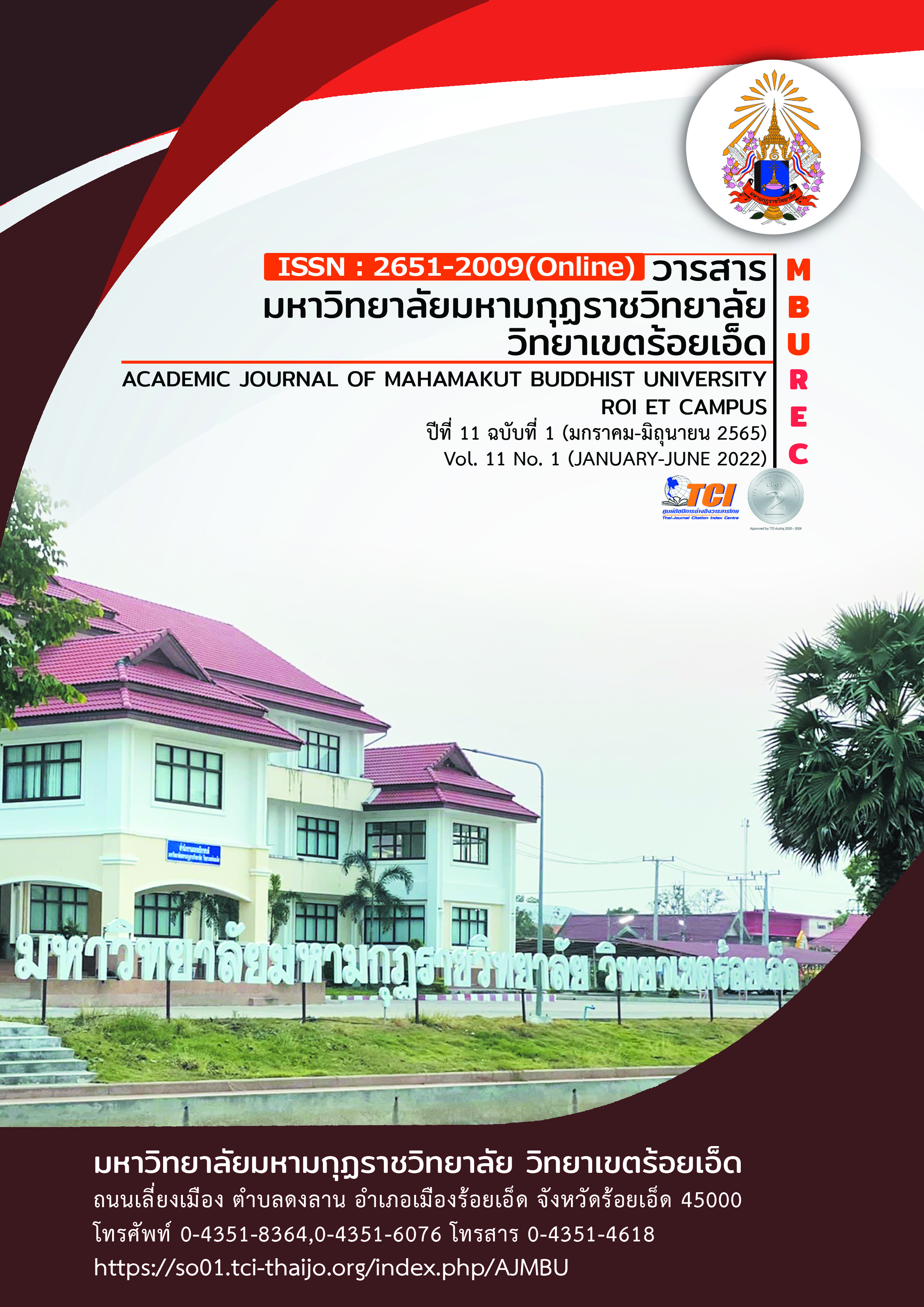PERSISTENCE ANALYSIS OF RETURN ON INVESTMENT IN EQUITY MUTUAL FUND IN THAILAND
Main Article Content
Abstract
This research article aims to analyze the persistence of return on investment in equity mutual funds. The set of sampling data comes from 274 equity mutual funds which reach out 5 years or more maturity date at the end of 2020. The sample is divided into 100 dividend paying funds and 174 non-dividend paying funds. A study period covers 5 years during 2016-2020. Return was measured by profit and loss due to the change in net asset value plus dividends. Such persistence is also measured by return that is consistently higher or lower than the 3 benchmarks, namely the average, median, and the Stock Exchange of Thailand's total return index SET TRI.
The results reveal that, in overall, equity mutual funds have persistent returns. This is because Spearman's 2020 correlations with 2, 3, and 4 years historical averagereturns are statistically significantly positive. Additionally, dividend paying mutual funds have a correlation with the 2 years historical averages, while non-dividend paying mutual funds have a correlation with the 2 and 3 years historical averages. Moreover, mutual funds that returns are higher than the average and median benchmarks are more persist than the lower ones. On the other hand, mutual funds that are below the SET TRI benchmark are more persist than the higher ones. Based on the results, it is suggested that investors should utilized historical average returns of 2-4 years for decision making in equity mutual fund investment. Furthermore, should not invest in mutual funds with lower historical returns than SET TRI because of their underperformance persistence.
Article Details

This work is licensed under a Creative Commons Attribution-NonCommercial-NoDerivatives 4.0 International License.
References
กลุ่มตลาดหลักทรัพย์แห่งประเทศไทย. (2564). เลือกกองทุนฉบับมือใหม่. สืบค้นเมื่อ 30 พฤษภาคม2564. จาก www.setinvestnow.com
โครงการให้เงินทำงานผ่านกองทุนรวม.(2564). มูลค่าทรัพย์สินสุทธิ. สืบค้นเมื่อ 2 กุมภาพันธ์ 2564.จาก www.thaimutualfund.com
ชนินันท์ พฤกษ์ประมูล และคณะ. (2563). ประสิทธิภาพของสัมประสิทธิ์สหสัมพันธ์แบบเพียร์สัน สเปียร์แมนและเคนดอลล์เมื่อข้อมูลแจกแจงแบบไม่ปกติ. วารสารอิเล็กทรอนิกส์ทางการศึกษา. 15(2). 1-16.
ตลาดหลักทรัพย์แห่งประเทศไทย. (2564). ดัชนีผลตอบแทนรวมตลาดหลักทรัพย์แห่งประเทศไทย.สืบค้นเมื่อ 2 กุมภาพันธ์ 2564 . จาก www.set.or.th
ตลาดหลักทรัพย์แห่งประเทศไทย. (2564). ประเภทของกองทุนรวม. สืบค้นเมื่อ 30 พฤษภาคม 2564. จากwww.set.or.th
ธนพร มีศิลป์. (2562). ปัจจัยที่มีอิทธิพลต่อผลตอบแทนของกองทุนรวมตราสารทุน และกองทุนรวม อีทีเอฟ. วิทยานิพนธ์ปริญญาบริหารธุรกิจมหาบัณฑิต วิชาเอกการเงิน. คณะบริหารธุรกิจ มหาวิทยาลัยเทคโนโลยีราชมงคลธัญบุรี.
สมาคมบริษัทจัดการลงทุน. (2563). ภาพรวมกองทุน. สืบค้นเมื่อ 30 ธันวาคม 2563. จากwww.aimc.or.th
อรุณ จิรวัฒน์กุล.(2558). สถิติทางวิทยาศาสตร์สุขภาพเพื่อการวิจัย. พิมพ์ครั้งที่ 4. กรุงเทพมหานคร : โรงพิมพ์บริษัท ส.เอเชียเพรส.


